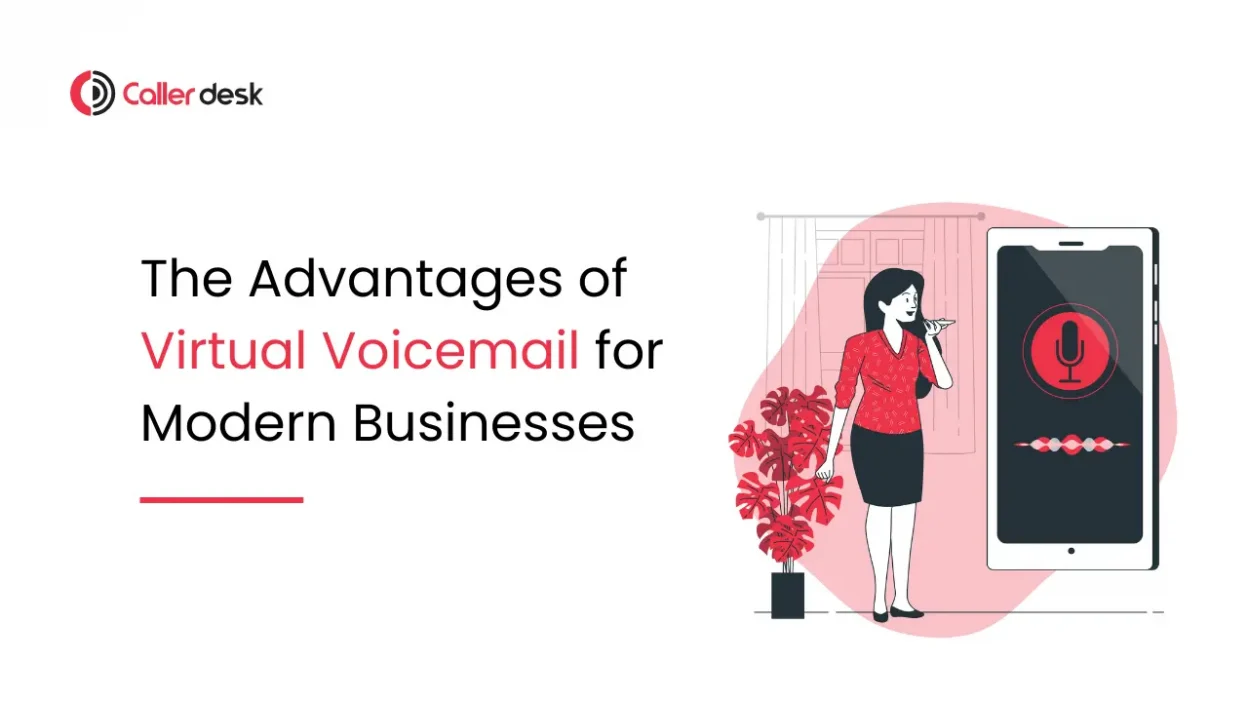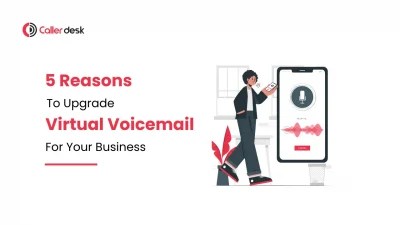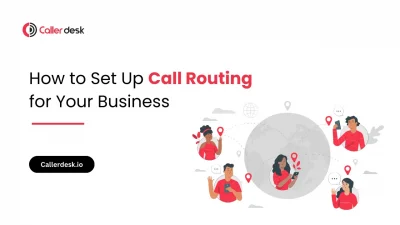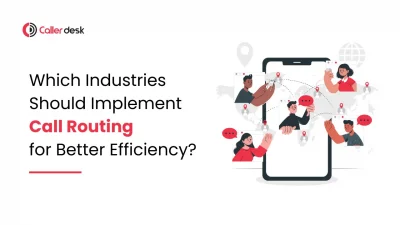Are you struggling to manage your voicemails efficiently in today’s fast-paced business environment? Effective communication is key in such a scenario. Call centers and businesses using cloud telephony are increasingly adopting virtual voicemail systems to improve their operations.
This blog explores the key advantages of virtual voicemail for modern businesses, focusing on how this technology can transform communication strategies and improve overall efficiency.
What is Virtual Voicemail?
Virtual voicemail is a modern voicemail system that operates through cloud technology. Unlike traditional voicemail, virtual voicemail offers various features to manage messages more easily and make them accessible from anywhere with an internet connection. This solution is particularly useful for call centers and businesses using or transitioning to cloud telephony.
Key Advantages of Virtual Voicemail
1. Enhanced Accessibility
Imagine you have a mailbox that you can only check when you’re at home. Traditional voicemail is like that—you can only access it from your office phone.
Virtual voicemail, on the other hand, is like having a digital mailbox you can check from anywhere. Whether you’re at home, in the office, or on the go, you can access your voicemails from your smartphone, tablet, or computer. This ensures that you never miss an essential message.
2. Improved Efficiency
Listening to voicemails can be like sorting through a pile of handwritten notes. It’s similar to having someone type down all your notes for you.
Virtual voicemail often transcribes your messages into text and sends them to your email. It’s like having someone type out all your notes for you. You can quickly read and prioritize your messages without having to listen to each one. This saves time and helps you focus on more critical tasks.
3. Grows with Your Business
As your business grows, so do the number of calls you receive. Traditional voicemail systems can be overwhelmed by an increasing volume of messages, much like a small mailbox overflowing with letters.
Virtual voicemail, however, is like having a mailbox that expands as needed. It can handle more calls without any issues, ensuring you always stay on top of your voicemails.
4. Cost Savings
Traditional voicemail systems require physical equipment, much like having a landline phone with an answering machine. There are costs for installation, maintenance, and upgrades.
Virtual voicemail eliminates the need for this physical hardware. It’s like switching from a landline to a mobile phone plan that includes everything you need without extra charges for equipment. This saves your business money, allowing you to allocate funds to other important areas.
5. Enhanced Security
Imagine having sensitive information stored in a locked box that only you can access. Virtual voicemail offers strong security features like encryption and secure access controls.
This means your messages are protected from unauthorized access, much like a digital safe. For call centers handling private customer information, this level of security is crucial to comply with data protection regulations and maintain customer trust.
6. Integration with Other Tools
Think of virtual voicemail as a team player that works well with other tools you use daily. It can integrate with your CRM system, much like how your smartphone syncs with your email and calendar.
This integration improves your workflow by linking all of your communication channels. For example, voicemails can be automatically logged into your CRM, ensuring that all customer interactions are recorded and accessible in one place. This makes your team more productive and organized.
7. Customization and Personalization
Virtual voicemail systems allow you to create personalized greetings and set up multiple voicemail boxes for different departments or team members.
Imagine walking into a business where each department has a clearly labeled mailbox with personalized messages. This level of customization ensures that your communication strategy is professional and organized. It helps in managing voicemails efficiently and provides a better experience for callers.
Latest Trends in Virtual Voicemail Technology
1. AI-Powered Voicemail Assistants
AI-powered voicemail assistants are like having a smart assistant who can manage and respond to voicemails for you. They can handle common questions, route messages to the right person, and even schedule follow-up actions. This technology helps businesses manage high volumes of voicemails more effectively, ensuring that no important message is overlooked.
Integration with Communication APIs
Integrating virtual voicemail with communication APIs is like having a universal adapter that connects all your devices. This allows seamless connectivity with various business applications. It helps in automating workflows and enhancing communication efficiency by ensuring all your tools work together harmoniously.
Conclusion
For businesses and call centers using or looking to switch to cloud telephony, virtual voicemail offers numerous advantages. It enhances accessibility, improves efficiency, and provides cost savings and improved security.
By adopting virtual voicemail, businesses can improve their communication processes, enhance customer satisfaction, and position themselves for future growth.
Frequently Asked Questions (FAQs)
What is the difference between traditional voicemail and virtual voicemail?
Traditional voicemail is tied to a physical phone system, like having a landline with an answering machine. Virtual voicemail is cloud-based, like having a mobile phone that you can access from anywhere with the internet. It offers more flexibility, storage capacity, and additional features like transcription and email notifications.
How secure is virtual voicemail?
Virtual voicemail services usually have advanced encryption and security protocols to protect your messages, much like how a bank protects your online transactions. Providers also offer regular backups and security updates to safeguard your data.
Can virtual voicemail integrate with existing phone systems?
Yes, virtual voicemail can integrate with most existing phone systems, especially those using cloud telephony. This integration allows for seamless communication management, much like how your smartphone integrates with various apps and services.
How does voicemail transcription work?
Voicemail transcription uses speech-to-text technology to convert voice messages into text. It’s like having someone listen to your voicemail and type it out for you, making it easier to read and prioritize messages quickly.
Is virtual voicemail cost-effective?
Yes, virtual voicemail is cost-effective as it eliminates the need for expensive hardware and maintenance, much like switching from a landline to a more affordable mobile plan. It offers a scalable, flexible, and efficient way to manage voicemails.





